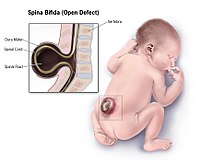
Photo from wikipedia
Software defect prediction models are classifiers often built by setting a threshold t on a defect proneness model, i.e., a scoring function. For instance, they classify a software module non-faulty… Click to show full abstract
Software defect prediction models are classifiers often built by setting a threshold t on a defect proneness model, i.e., a scoring function. For instance, they classify a software module non-faulty if its defect proneness is below t and positive otherwise. Different values of t may lead to different defect prediction models, possibly with very different performance levels. Receiver Operating Characteristic (ROC) curves provide an overall assessment of a defect proneness model, by taking into account all possible values of t and thus all defect prediction models that can be built based on it. However, using a defect proneness model with a value of t is sensible only if the resulting defect prediction model has a performance that is at least as good as some minimal performance level that depends on practitioners’ and researchers’ goals and needs. We introduce a new approach and a new performance metric (the Ratio of Relevant Areas) for assessing a defect proneness model by taking into account only the parts of a ROC curve corresponding to values of t for which defect proneness models have higher performance than some reference value. We provide the practical motivations and theoretical underpinnings for our approach, by: 1) showing how it addresses the shortcomings of existing performance metrics like the Area Under the Curve and Gini’s coefficient; 2) deriving reference values based on random defect prediction policies, in addition to deterministic ones; 3) showing how the approach works with several performance metrics (e.g., Precision and Recall ) and their combinations; 4) studying misclassification costs and providing a general upper bound for the cost related to the use of any defect proneness model; 5) showing the relationships between misclassification costs and performance metrics. We also carried out a comprehensive empirical study on real-life data from the SEACRAFT repository, to show the differences between our metric and the existing ones and how more reliable and less misleading our metric can be.
Journal Title: Empirical Software Engineering
Year Published: 2020
Link to full text (if available)
Share on Social Media: Sign Up to like & get
recommendations!